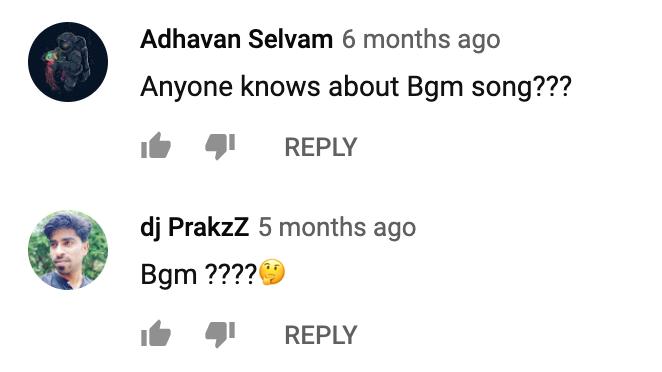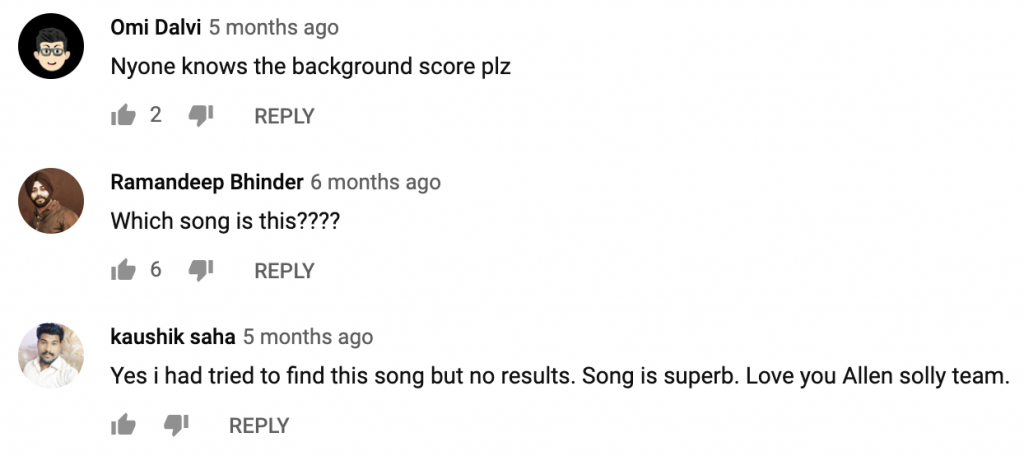
Update – August 21, 2019:
Earlier:
May 2018: “”
March 2019: “”
April 2019: “”
Now:
August 2019: “”
The same guy (male model) and the same stag.
Notice how the stag instigates the man to pick up a sledge… and once he reaches his office, the poor stag is left outside. The earlier films clearly showed the stag as an integral part of the office!

Also notice the utterly bizarre difference – 5 million+ views, but ONE (that too sarcastic) comment! It goes in line with the effect of the film on Twitter, for instance.

Now, I completely understand how YouTube promoted views work and that probably easily explains the 5 million+ views. But, of the 5 million+ views, people did not have anything to say about the ad at all?
Out of 5 million+ views, that is – not just a few thousand. Also, notice the Likes and Dislikes – they are in 2 digits, while the views are in 7 digits! One explanation to this is that the video played as a pre-roll ad before many other videos and that means people are in that original video’s page and not the Allen Solly video page. But even then, the sheer difference between the number of views, and the complete lack of any visible digital engagement is astounding.
So, who decided that the stag is the brand’s biggest asset and why?
The other problem – the YouTube video doesn’t even have a call-to-action. Not in the YouTube description, not in the tweet! There is no direct link that people can click, after watching the video, to know more about the jeans range, prices etc. Is that really difficult to add? And wouldn’t that help in understanding if people are interested enough to click on it after watching the video… leading to an identifiable metric to know if the video worked, beyond that seriously warped views count on YouTube?
But one thing that I wrote about earlier (below) and that has changed is the note on the music credit. The press announcement for the Jeans spot has details on the singer and composer! This is very good!
Personally, I quite like the stag. Its presence is totally justified in this video, like the earlier video (Open work culture) that had a ‘Bring your pets to office’ theme. The other videos (Future of bottom wear and Fun at work) had no context for the stag being inside the office at all, incidentally.
I also liked the jeans range – it looks good and I’m already positively oriented towards Allen Solly as a brand, given my previous experiences. But does the brand and the agency need to elevate the stag’s presence with lofty lines like, ‘the brand’s greatest asset’, only to throw it in every single ad film and every single media announcement?
ORIGINAL POST:
Allen Solly launched the Stag logo in 2012.
See: .
But is there any way to contextualize the Stag’s value addition in the narrative? I do understand that the logo has excellent recall value – I see the stag face+horns and remember Allen Solly as the brand.
The brand brought the Stag to life, literally, in April 2018:
“This film is another big step in that direction wherein we bring alive our brand logo ‘The Stag’ and through it we celebrate the ‘Open Work Culture’ in today’s workplace.” —source: .
There was a context for adding a real stag in the narrative – towards the end, they call the workplace, ‘Cool pet-friendly offices’ (and the last shot has other pets too). So the use of the real stag made sense.
The second use of the real stag probably doesn’t make much sense, in a trouser’s sales pitch, called ‘Future of Bottomwear’.
The presence of a real stag seems forced as if the brand and the agency were enamored by the idea of using a real stag – “the TVC continued to use the Brand’s greatest asset – the stag” —source: .
The latest use of the real stag is in the context of Allen Solly Woman’s ‘Fun at Work’. The stag plays umpire inside an office!
“since Stag has become an integral brand asset for Allen Solly, we leveraged it seamlessly to the brand’s advantage by giving it a playful yet meaningful role in the story” —source: .
Now, who decides that the stag is an integral brand asset, in its real self? Not the logo, which I fully agree is an integral brand asset because it is so noticeably associated with the logo.
The use of a real stag in a ‘pet-friendly office’ narrative was perfectly placed. But subsequent films showcasing a real stag?
What criteria/parameters should brands and agencies use to decide if something is an ‘integral brand asset’ or not?
- Is it the YouTube views of the videos with stag and without? For instance, Open Work Culture, where the real stag was first used, has 15 million views. Future of Bottomwear, the 2nd real stag film has 11 million views. But the , a subset of Open Work Culture that didn’t feature the real stag, has only 2.9 million views. Are the views a function of the amount of money used to promote the videos, more than the use of real stag?
- Is there something about people talking about the stag? Are people talking at all? A rudimentary sample may be on Twitter. There is no one talking about the stag, incidentally, there. In comparison, Vodafone’s ZooZoos (despite not being the brand logo) are spoken about in assorted context, even though the popularity has waned over the years.
- Another comparison is with Trivago man and Airtel girl. Does the ‘popularity’ of Trivago man and Airtel girl is because people love seeing them? Or because the brands spend ginormous amounts of money showing the ads a LOT of times? Do people really ‘like’ the Trivago man or Airtel girl, or have they resigned to the fact they cannot get away from them because they appear in every channel, in every break, and there’s no point even complaining about them? In other words, visibility is forced, but the popularity can’t be gamed. Merely being front of people cannot be ‘popularity’ because, at one point, even Gurmeet Ram Rahim Insaan was in front of people a LOT, much like Swami Nithyananda now, with his meme-versions.
What value does the real stag add in the bottomwear film and the Allen Solly Woman’s ‘Fun at Work’ film? It definitely stands out as an oddity, since no one expects a real, huge and live stag in the middle of an office or a dressing room.
—
On a different note, adding stag heads in Allen Solly stores seem like an equally odd decision to bring the ‘stag to life’, in-store.


For one, they are dead (or perhaps fake). And stag heads on the wall is from a different period in time when hunting animals was seen as a cool thing to do – these days, the kind of audience Allen Solly wants to sell too/be associated with do not think hunting is cool, I’m sure. Hunting helpless animals is outdated machismo, thankfully, and perhaps doesn’t sit well with the notion of pet-friendly offices that allow real live stags.
—
On another different note, there are people asking pointed questions to Allen Solly on its assorted properties and the brand doesn’t seem too keen on interacting with them. Most of Allen Solly’s ads have comments (at least on YouTube) asking more about the music/song used.





But beyond informing people generally that it was created exclusively for the film and thanking people for liking it, the brand leaves it open-ended.

Can’t the brand think of making the music available for download on streaming platforms, and make another connect with the audiences in a new set-up?
This seems to be a perennial opportunity for many brands. See my note on Bose’s film and the questions about the song, earlier: .
There are people asking specific questions too – about where to purchase the product, and the specific details of which model is showcased in the trouser film.

I’m sure someone from Allen Solly could engage with those pointed questions and respond with equally specific replies. It’s an open opportunity which would also be seen by others. A direct link to buy that particular model of trousers in an online store would anyway demonstrate the ROI of taking charge of such engagement.
